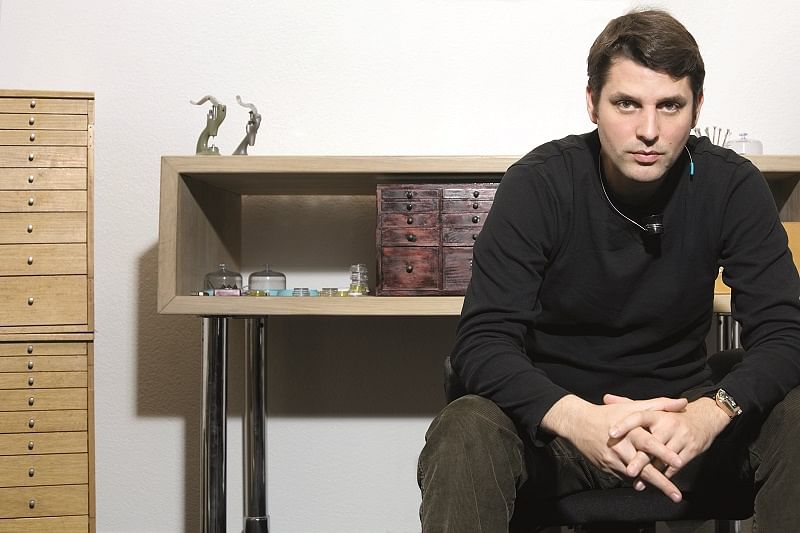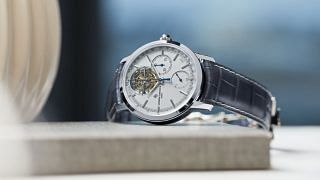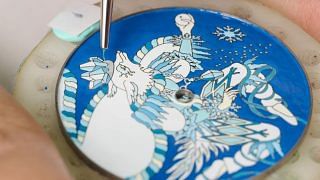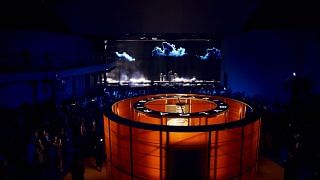Today, independent names like Urwerk are as much a part of a horology enthusiast’s lexicon as the fine mechanical- watch industry’s largely unchanging roster of established names. But two decades ago, this was not the case, with small, autonomous brands a rarity in a conglomerate-dominated landscape.
With their avant-garde horological concepts and technical innovations, Urwerk, De Bethune and MB&F have carved a niche for themselves, and continue to thrive more than a decade down the road, respectively celebrating 18, 14 and 10 years of operations this year. So, when Maximilian Busser (founder of MB&F), Felix Baumgartner (co-founder of Urwerk) and Alessandro Zanetta (De Bethune sales director, and son of company co-founder David Zanetta) were recently in Singapore for The Hour Glass’ Rebels With A Cause event, we sat them down for a candid chat, touching on topics such as tough beginnings, rebellion and the meaning of the word “fugly”.
You’re here for The Hour Glass’ Rebels with a Cause event. So, what is your cause?
Max Busser (MB): Creating something I’ll be proud of even on the last day of my life, which means creating what I believe in and not what the market wants. I believe mechanical watchmaking is mechanical art. I can’t sing, I can’t paint, I can’t write, but I can imagine these amazing three-dimensional pieces of mechanical art. So I’m basically expressing myself, with the help of the Friends (MB&F stands for Maximilian Busser and Friends) I work with – the artisans, craftspeople, watchmakers, engineers – who transform my ideas into reality.
Felix Baumgartner (FB): Expressing myself as a watchmaker today. I come from a watchmaking family. It’s a tradition. Today, (the independent watch scene) is doing okay. But in 1995, when I came out of watchmaking school, the industry was quite boring and focused on traditional things. Eighteen years ago, (Urwerk co-founder and contemporary artist) Martin Frei and I said: “We have to bring watchmaking and art together.”
Alessandro Zanetta (AZ): When my father and Denis (Flageollet) started De Bethune, they wanted to take back a certain quality that, for them, had been lost in the industrialisation of watchmaking. Everything is done completely in-house. My father does the design – he comes up with strange ideas, like the revolving moonphase and the Dream watch – and Denis is the master watchmaker who realises all these ideas.
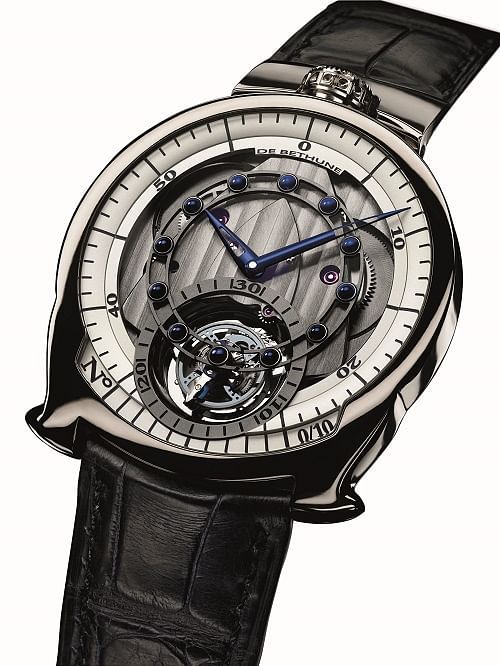
All three brands started between 10 and 20 years ago. Why do you think independent watches are having such a moment now?
FB: (In this region), The Hour Glass has helped to educate consumers and build the market. This, with the right choice of independents, has helped a lot in (raising our profile) and creating a new movement. Another thing is the Internet. The Internet has enabled brands to communicate with people, without having to spend a lot.
MB: Some people have told us, you make it look easy. And I’m like, it took 18 years for Felix, probably 10 years of which were a complete struggle. For us, it was 10 years of working like crazy, and coming up with 11 calibres. This enormous amount of work, this clear vision, this brand integrity, have made us who we are. It’s not like at some new brand where some guy wakes up and decides, “I’ll make another way of telling time.”
FB: We had to build that movement in the beginning. For those starting a company in our movement now, it’s easier to find your place than it was 18, 14, 10 years ago. It was really a niche market then.
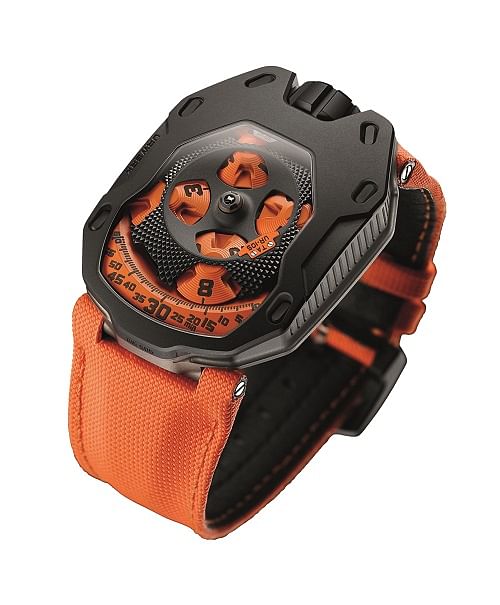
As your brands become better known, do you think your designs will ever become part of the mainstream?
MB: All of us push the envelope constantly. When I came up with the HM1 in 2005, it was ground-breaking. People hated it, people loved it. It was my baby, I was so proud of it. Now, when I look at it, I look at it with enormous fondness. But I wouldn’t create that today. Today, what you see is this (gestures at an HM6 on the table before us). But it was created four years ago by me, then realised with the team.
Now, I’m working on what you’re going to see in 2020 and after, which, again, will be completely different. So, how will anything we do ever become mainstream? We’re constantly going forward, we don’t register our designs, because by the time somebody has the courage to catch on and start copying us, we’ve already gone on to something else.
AZ: For us, it was a bit different. Max started with Horological Machines, something completely different for the market. We started really classic, because we wanted to create a manufacture, to create a team, and you cannot do everything you want immediately. We have a classic collection, and then we have all the crazy things. Classic things are much easier for people to accept, because they are used to them. This is not the case for our more unusual models. I’ve heard people saying that this model (points to the Quetzalcoatl, a watch inspired by a Mesoamerican deity) looks like sh*t.
MB: Don’t worry, I get that every day. (All laugh.)
FB: This is also the problem with the Internet. We hear a lot of positive things, but you also get a lot of… There’s always the yin and the yang.
MB: When the HM6 came out, I discovered the word “fugly”. (Laughs.) I didn’t know what it meant when I first saw it (used in a comment online). I was like, what is that word? Initially, of course, you’re offended. Nobody likes it when you create something that you’ve put so much of yourself into, and people go, “Ugh, it’s f**king ugly.”
But then you take a step back and think, maybe we’ve created a future icon. Because every icon, when it was created, was probably misunderstood by maybe 98 per cent of the population, just because it’s so different. So, maybe, just maybe, we’re writing history.
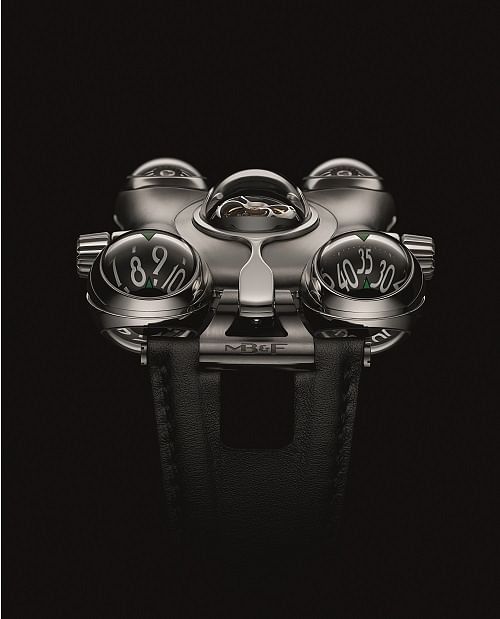
FB: I think the 103 (the first Urwerk watch to bear its now-signature satellite time-indication system) was quite a rebellious piece. Two years ago, we had the EMC (the Electro Mechanical Control watch, which uses electronics to allow a user to monitor and regulate the movement’s accuracy), and I say it’s another milestone, but nobody believes me (smiles). We will see.
MB (referring to FB): He’s a rebel. He doesn’t have Whatsapp. (All laugh.)
AZ: We just do what we like to do. My father, when designing, just does what he likes. If this is rebellion, we should all be rebels. Personally, I don’t like to follow too many rules. Respect is important – live your life the proper way and respect the people around you, but that’s it. When it comes to watches, we respect the others but we do our job and have our vision.
MB: I completely agree with Alessandro. The Hour Glass asked us a few questions before it organised the event, and one of them was, “Do you consider yourself a rebel?” I said “No”, because, for me, rebellion means being against an establishment. But I’m not against the establishment. I’m lucky I’ve found what was important to me, and I’m going my way. It’s not a war or a reaction, it’s doing what I’ve found makes me happy.
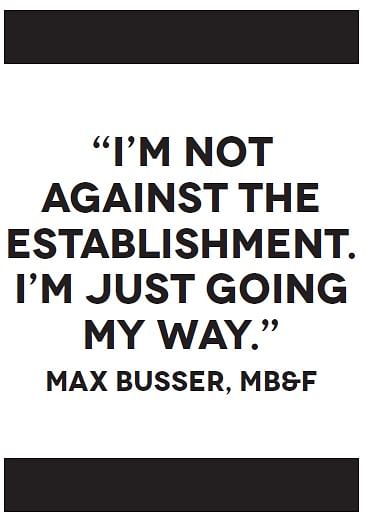
What does the future of independent watchmaking look like?
MB: I think we’ve paved the way for the younger generation. I just hope they won’t take their eye off the endgame, which should be your pleasure, your pride, your knowledge, and not the money. In the past 15 years, the companies that started in watchmaking where the initiators had money as a goal – they all failed. The only ones who have come through have been people like ourselves, and the Journes and the Greubel-Forseys, who did it with their own means and just had to (forge their own paths).
FB: I was very worried 20 years ago as a very young watchmaker, having only traditional big brands around me. I think we’ve built a new movement, and that movement will go on. Watches like (ours) will let the young generation dream; they will be inspired but they will do it in their way. Twenty years ago, you had tourbillons, but industrial tourbillons. Today, you have all these (gestures at the watches on the table, comprising novelties from all three brands). The young just have to continue. I’m not negative at all; the playground is large and the future looks extremely bright.



